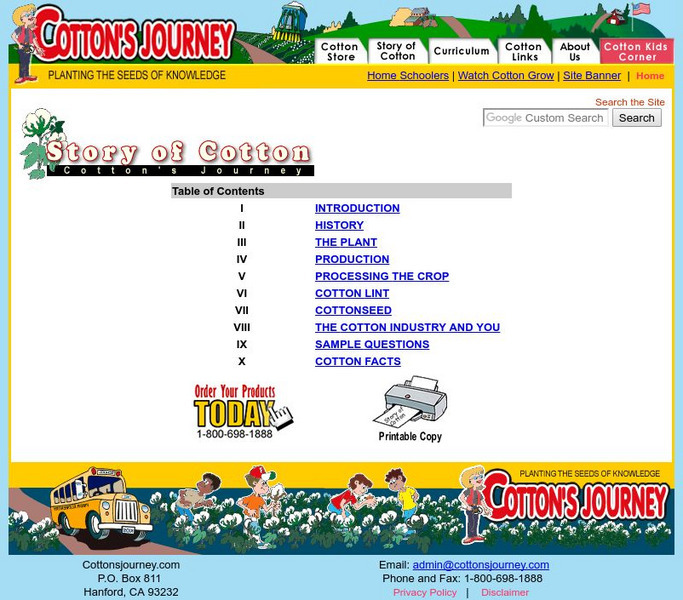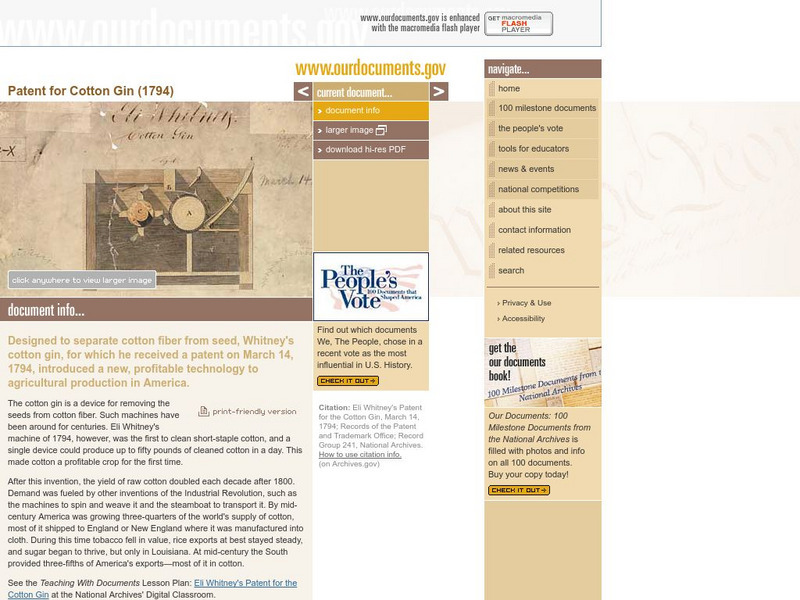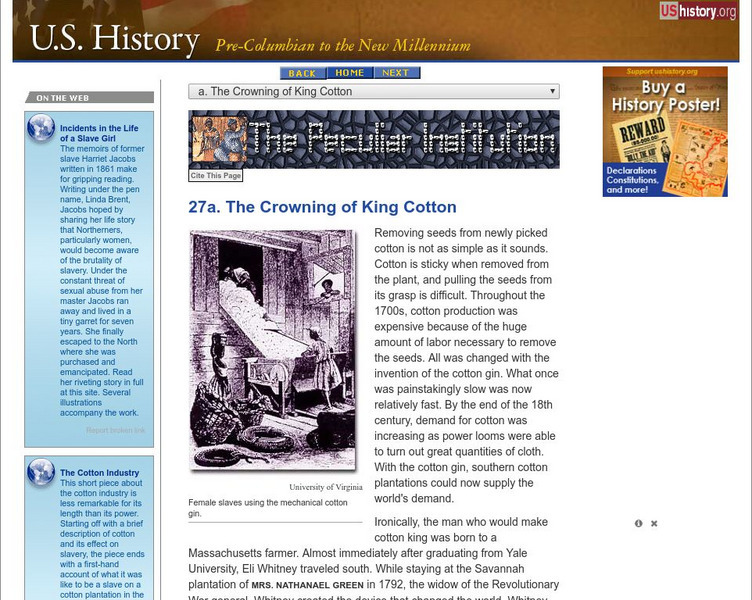Royal Botanic Gardens
Plant Cultures: Cotton
Cotton is used to make over 40% of the world's textiles. You will find many interesting facts and a wealth of information about cotton on this informative resource.
Other
Eli Whitney Museum: Eli Whitney
This is the Eli Whitney Museum online. Provides information on the inventor, his product, his factory, and much more. Also provides information on the museum itself. Flashpoint not needed, but recommended.
Other
Cotton's Journey
Detailed information about the history and production of cotton, supported with numerous labeled illustrations. Includes an extensive list of questions for students that are based on the site content. Under the 'Curriculum' tab can be...
National Inventors Hall of Fame
National Inventors Hall of Fame: Eli Whitney: Cotton Gin
Read about Eli Whitney's cotton gin and its importance to the cotton industry.
Cornell University
Cornell University: Library: I Will Be Heard: A Slave's Life
A brief look at how slavery in America was tied to the crops grown in the South. See how the need for skilled workers was decreased and the use of unskilled slaves increased with the introduction of the cotton gin.
Georgia Humanities Council and the University of Georgia Press.
New Georgia Encyclopedia: History and Archaeology: Eli Whitney in Georgia
Although Eli Whitney was born in Massachusetts, it was in Georgia that he invented the cotton gin in 1793.
US National Archives
Our Documents: Patent for Cotton Gin (1794)
Interactive image of Eli Whitney's plans for the cotton gin, accompanied by an explanation of the cotton gin's purpose and significance in relation to the Industrial Revolution.
Independence Hall Association
U.s. History: The Crowning of King Cotton
Read how an invention made it possible to increase the amount of cotton available for export, thus leading to an increase in the number of acres planted in cotton, and resulting in the need for more and more slaves. Before the invention...
University of Oregon
University of Oregon: Mapping History: Slave Crops in the American South: 1860
This very interesting map shows the crops grown by slaves on plantations in pre-Civil War South.








